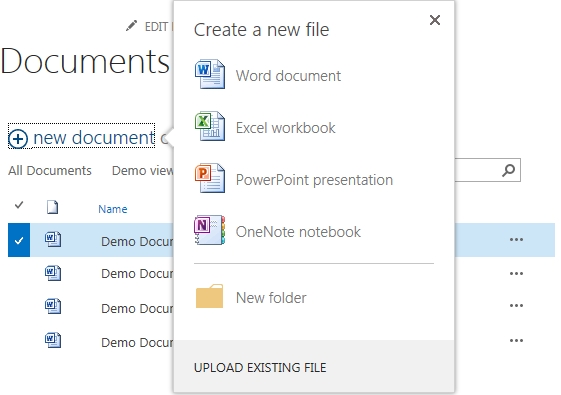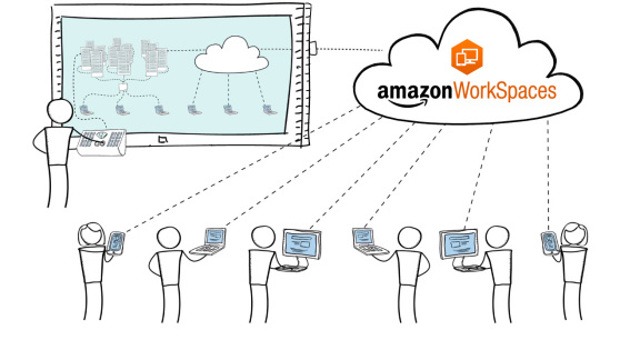The cloud in 2014: My 7 big predictions for next year
 Just a short three years ago, skeptics called outgoing Microsoft CEO Steve Ballmer as utterly foolish when he uttered his three iconic words: "We're all in." Ballmer, of course, was referring squarely to Microsoft's position towards that 'cloud thing' which was rearing its head swiftly three years ago. Most of us were taken aback, since Microsoft seemed like the last company interested in shedding market share to non-traditional licensing.
Just a short three years ago, skeptics called outgoing Microsoft CEO Steve Ballmer as utterly foolish when he uttered his three iconic words: "We're all in." Ballmer, of course, was referring squarely to Microsoft's position towards that 'cloud thing' which was rearing its head swiftly three years ago. Most of us were taken aback, since Microsoft seemed like the last company interested in shedding market share to non-traditional licensing.
Turn the page to 2013, and Microsoft is one of the cloud's most vocal champions -- with growth numbers to prove the cloud is a hot market and growing even hotter. In February 2013, Redmond re-launched Office 365 for Business, which was a big enough improvement over the suite's questionable former self that I gave it my two thumbs up finally. I'm not the only one seeing Office 365's about face; a full 37 percent of organizations surveyed recently are admittedly adopting Office 365 within 24 months.
Cloud email and office productivity isn't the only thing on Microsoft's mind. The software giant let loose that as of this past summer, a full 50 percent of the Fortune 500 was already using its cloud PaaS/IaaS ecosystem Windows Azure for internal needs. Keep in mind that Azure was only unveiled in 2010, making this second place competitor to Amazon a feisty up-and-coming underdog.
Not to be outdone, Amazon is posting similar growth and uptake of its cloud services, with net sales as of Sep 30, 2013 hitting a monstrous $960 million. To put it into full perspective, that's a 58 percent year-over-year improvement for Amazon's AWS division. Even one of the oldest players in the cloud game, Salesforce, posted 36.5 percent year-over-year revenue growth recently.
This past year has been one full of experimentation for some vendors, maturation for others, as well as entrance for numerous new faces. 2014 is no doubt going to continue defining the shape of the cloud's many areas, and I've got some predictions for how the next year is going to play out.
Here's my cloudy outlook for the year ahead.
#7) Data Portability Comes Into Focus for Organizations
The cloud's all arms in letting you in. Every vendor's got a red carpet leading into their own respective ecosystems. But leaving the party, whether to take data back in-house or merely to switch providers, is a bit trickier. The big players like Windows Azure and Amazon AWS claim to be making strides in data portability, but the status quo isn't anything to be proud of.
Welcome OpenStack to the fray. This first truly vendor-neutral cloud operating system aims to create a modular, level playing field for any vendor looking to offer cloud services to customers. What's the big deal? Imagine a future where switching cloud vendors is as easy as asking for a bulk transfer of your data into another datacenter of a competing vendor. No conversions, manipulations, transfigurations, or other similar wacko requirements are asked of you in order to make a switch.

Before OpenStack, the cloud was looking more and more like a modern age Wild West. 2013 saw a huge push from this new cloud OS community in bringing together swathes of partners dedicated to one purpose: bringing down the barriers and offering a vendor-neutral approach to cloud data portability. (Image Source: OpenStack)
OpenStack is still relatively young, and rather misunderstand to most IT professionals, let alone consumers. 2014 may indeed be the breakout year in which this initiative gains a ton of traction as organizations continue demanding data portability openness and fairness. Check out this neat video Rackspace made as a sort of OpenStack 101 for beginners.
#6) Standalone Private Clouds Bid Farewell
I'm not sure where the private cloud push got its momentum, because I've always seen it as a bastardized me-too approach to cloud computing. Clouds that are developed solely to serve a single organization's users... hmm, didn't that already exist? Yes, it was called the internal datacenter or merely servers hosted by the IT department which had external access opened up. Whoever tried to re-invent this has-been approach, please stand up?
My thoughts on the private cloud's demise are shared by others, like Joe Kinsella of CloudHealth Technologies. Just a few days ago he wrote that "The private cloud has one major flaw in its armor: it is developed, deployed and managed by the same IT organizations that provided enterprises their current underutilized, underperforming, and non-agile data centers." Bingo! The private cloud moniker was nothing more than a perpetuation of the same yesteryear approach to enterprise IT, but in a prettier packaging.
If you want to keep your internal servers, feel free to do so. But don't peg it as a private cloud. 2014 is going to continue shifting the debate towards whether organizations should instead go hybrid or full-on public cloud for their needs. I've written recently about some of the hybrid clouds my company has been piecing together for clients, and I'm confident that the hybrid approach is going to balloon in popularity next year due to the flexibility, choice, and reasoned cost savings that it offers.
#5) The Legacy PBX Keeps Crumbling Thanks to VoIP
My last piece on BetaNews dove deeply into this very subject. VoIP in all of its various flavors is a hot subject. So much so that just a year ago, I could count the number of small businesses I support who were moving to VoIP on one hand. Now, everyone and their grandmother is itching to ditch their onsite PBX for good.
Unified communications, the all-encompassing umbrella that is web conferencing, telephony, voicemail, email, and IM, is driving this push in many ways. Companies are realizing that the old way of doing business with fragmented technologies being layered in order to provide a cohesive end user experience just isn't so ideal anymore.
A legacy phone system pushing phone calls to static desk phones, voicemails to aging Exchange systems, coupled in with web conferencing being doled out to third parties like Webex, and conference call bridge service being used by one completely different link in the chain. You can catch my drift -- a sprawling technology mess. Unifying these experiences and reducing friction is key to all forms of VoIP entering the hands of workers who were otherwise resistant to coming on board. The status quo in communication was too hard to handle for many, hence their apprehensive attitudes thus far.
I think that cloud-hosted VoIP is going to continue to be a huge driving force in bringing this technology down to the masses. This is due in large part to heavily reduced upfront costs and ease of administration. I've long voiced my support for the likes of RingCentral, but I'm expecting 2014 to bring Microsoft into the picture with a cloud-hosted Lync Online solution that ties in the missing piece of the puzzle: desk phone and enterprise voice service.
If Microsoft's comments back in May of this year still hold true, then we should be seeing an Office 365 based cloud VoIP solution by the end of 2014. VaaS, or Voice as a Service, may get that much more appealing for those who have been yearning for an ultimate all in one offering that is hosted in the cloud and ties in all their communication needs into one central offering. If anyone can deliver on this kind of promise, my money's on Microsoft.
Who won't be enjoying 2014 as much? Legacy PBX installers and technicians. A word of advice to them: it's time to start repositioning your skillset in Lync, VoIP, and other modern voice alternatives. For all intents and purposes, the traditional on-premise PBX is (almost) dead.
#4) Hybrid Cloud Becomes The Go-To Choice
VMWare and Amazon both have it wrong. Each of them is wildly successful at what they do, don't get me wrong. But as the playing field continues to level out, their exclusive -- as opposed to inclusive -- approaches to the cloud are going to continue building vocal foes in the enterprise. How so?
Amazon and its AWS ecosystem are touting the public cloud as the best place for your data. Conversely, VMWare is tooting the private cloud horn, which I predicted a few paragraphs back is going to start hitting the dust -- as far as forward looking IT strategy is concerned. The only big competitor letting the consumer choose seems to be Microsoft with its Azure offering. Who's to say that strictly private or public clouds are the best for every organization? Do Amazon or VMWare truly know better than the CTO or IT Director?
Microsoft, instead, is kindly telling companies: you make that cloud path decision. We'll provide the backbone for you, no matter what you're most comfortable with. It's a viewpoint many of my own customers are opting for, and the reason Azure is an attractive alternative to the two former players.
#3) Cloud Document Storage & Sync Services Grow Up
Cloud file sync services like Box.net, Dropbox, and Egnyte have been marking their territory for years. What's been the biggest thing holding them back? Data security concerns and pricing, in my eyes. Both of these previous black holes are not completely gone, but getting much better.
The cost of cloud storage continues to drop as big vendors like Box and Dropbox increasingly leverage their growing economies of scale. Likewise, rising user bases are providing the influx of cash needed to continue development on bringing more features that were relegated to the internal data center -- tight security controls, auditing capabilities, etc -- into the cloud infrastructures behind these products.
While security is still a touchy subject among C-level execs and IT pros alike, new surveys are showing improvement on the trust relationship between consumers and vendors. I touched on one survey of small businesses by comScore a few months back that found 62 percent of them claimed their data privacy actually rose due to their moves into the cloud.
And another recent survey highlighted by Infosecurity Magazine found similar rising confidence in cloud services and their ability to host confidential company data. There's no doubting that cloud vendors, especially the biggest players, are taking datacenter security more seriously than ever before. And the market sentiment is finally reacting to it.

Microsoft's newest cloud-based SharePoint Online is a remarkable departure from the traditional confusing releases of prior years. Not only can you take your document file server to the cloud with ease, but Office Web Apps are almost good enough to allow basic desk workers to ditch their desktop Office. No joke. I can't say the same about the competing cloud storage vendors yet. (Image Source: MS SharePoint Forums)
I'm eating my own dogfood, too, on cloud document storage. My managed IT services company just ditched a hybrid file storage solution based around a NAS box and Google Drive in exchange for a pure SharePoint Online "file server in the cloud" approach. The centralized security controls, auto document versioning, and SkyDrive Pro syncing capabilities are much better than what we had sprawled out before. And customers of ours are itching to be moved into a similar path in greater numbers than ever before based on calls we're receiving.
If your feelings towards cloud file storage were previously bitter, 2014 may be the time to honestly reconsider.
#2) Price Battles Turn Into All-Out Price Wars
The past few years have been nothing but posturing by the big boys. I'm predicting that 2014 will see even fiercer competition on the price front, especially among the 800 pound gorillas in the public cloud sphere. Amazon AWS, Windows Azure, RackSpace -- as more IT budgets are setting aside big sums for cloud-first hybrid initiatives, each of these vendors is going to yearn for bigger slices of the consumer pie.
Commentators were pretty vocal back in spring 2013 when it seemed like Azure and AWS were set to start an all our price grudge match. RackSpace dipped its toes into battle as well this past year, and got bit on the hand a little harder than it wanted. 2014 is going to allow the gloves to come off, I believe, for two reasons: the cloud market is becoming increasingly flooded with competition, and technology levelers like OpenStack will allow even the smaller fries to go toe to toe with the cloud's sheriffs.
The winner is none other than the consumer in this war, which is the best part. Better uptimes, greater choice, and lower prices. Who can complain?
#1) VDI Makes Its Second Coming: In It To Win It (Finally)
Thin clients. Zero clients. Call them whatever you wish. The technology for virtual desktop infrastructure (VDI) has been around for about a decade now, ever since Microsoft first offered Terminal Services way back when in its infancy. But a number of things always kept VDI out of reach for the masses. The technology (both backend and frontend) was costly, tough to install, and even nastier to maintain in scale.
I know first hand how terrible VDI used to be. We dabbled in VDI at my previous job working in IT for a public high school district. The product we attempted to leverage was one offered by NComputing which was supposed to provide simple thin clients for students that needed general access web browsers and Microsoft Word around our buildings. Needless to say, after just a few months of trialing, and endless rounds of drowning support calls, we pulled the plug prematurely. There had to be a better way then that nightmare.
I've got renewed faith in VDI come 2014, as the latest market offerings are spurring tons of new hope. We've been deploying a flavor of VDI, namely Windows RDS off Server 2012 R2, for medical offices and mobile workforces with tons of success and low cost. The same can also be done purely from the cloud now, too, as Microsoft quietly opened the doors to Azure hosting Windows RDS sessions this past summer.
But Microsoft is far from the only player attempting to bring VDI back into the forefront. Amazon wants in on this area, and it recently unveiled its huge new Amazon Workspace offering which hopes to bring DaaS to the masses. VMWare made headway as well by gobbling up one of the biggest existing DaaS vendors, Desktone, back in early November. What was a lonely market space just a short time ago is going to explode in 2014 as each vendors' respective offerings get spruced up and flown into battle.
I can only wonder how the non-Microsofts of the world are going to scurry past Redmond's licensing rulebook on this next go around in VDI/DaaS. Former DaaS vendor OnLive got shut down by Microsoft's legal teams pretty quickly after the assertion was made that they were breaking longtime Windows licensing terms in how they delivered desktop instances to customers. Prior to being acquired by VMWare, Desktone published a massive 4 part series of Q&As about how it handles these licensing gray areas. We'll all be the spectators in this one as it begins to play out next year.

Amazon is taking its WorkSpaces offering into unchartered territory: bringing a twist on Microsoft's own RDS technology to the working masses. If you thought Amazon wasn't interested in Desktop-as-a-Service, guess again. (Image Source: Amazon)
There's one offering which hasn't even been announced yet, but has every Microsoft watcher (including the likes of Mary Jo Foley, Paul Thurrott, etc) claiming its existence in development back at Redmond. I've touched on it numerous times as well the last few months. "Project Mohoro" as it's rumored, is Microsoft's Azure-based attempt to bring us a full fledged Desktop-as-a-Service offering.
If Microsoft can truly consumerize the DaaS experience into a "pay as you go" environment like Azure, where worker desktops could be spun up with the same ease as a Windows Server instance, then it would give organizations looking to provide desktops on the cheap for internal or mobile staff an easy outlet.
Sure, you could build out your own internal Windows RDS infrastructure, or play with doing it on Azure (if you can handle wading through Microsoft's ludicrous SPLA requirements) but either direction involves a sizable time and IT investment -- both of which are increasingly in short demand at organizations.
I'll be one of the first to call Microsoft out: the time is now for Windows licensing rights to change so that VDI can take off once and for all. Windows RDS is great, but it's a Redmond shoe-in and Microsoft knows that full well. Level the playing field by allowing any version of Windows, down to Vista, to be run in a DaaS-based environment by any vendor who plays by fair rules. If you've got the better vision for how DaaS should be run, then let's see Mohoro come to fruition and fight an honest fight against the other innovators on the market.
But don't hold back the competition artificially through licensing red tape and legal black holes. Everyone including Microsoft will be the long term loser if the status quo continues.
Another Year Down, And Another One Full of Uncertainty Ahead
I don't have any magic glass ball to peek into. My observations are based solely on what I see playing out in the marketplace, with a sprinkling of customer realities and external insights bearing down on my opinion. I'm always curious to hear what others have to say. Am I off track with my 2014 predictions? Did I miss a big item which you think should have made the list? Sound off in the comments area below.
But grab a drink while you're at it. 2014's cloud forecast is looking rather bright no matter how you slice it.
Photo Credit: Creativa/Shutterstock
 Derrick Wlodarz is an IT Specialist who owns Park Ridge, IL (USA) based technology consulting & service company FireLogic, with over eight+ years of IT experience in the private and public sectors. He holds numerous technical credentials from Microsoft, Google, and CompTIA and specializes in consulting customers on growing hot technologies such as Office 365, Google Apps, cloud-hosted VoIP, among others. Derrick is an active member of CompTIA's Subject Matter Expert Technical Advisory Council that shapes the future of CompTIA exams across the world. You can reach him at derrick at wlodarz dot net.
Derrick Wlodarz is an IT Specialist who owns Park Ridge, IL (USA) based technology consulting & service company FireLogic, with over eight+ years of IT experience in the private and public sectors. He holds numerous technical credentials from Microsoft, Google, and CompTIA and specializes in consulting customers on growing hot technologies such as Office 365, Google Apps, cloud-hosted VoIP, among others. Derrick is an active member of CompTIA's Subject Matter Expert Technical Advisory Council that shapes the future of CompTIA exams across the world. You can reach him at derrick at wlodarz dot net.